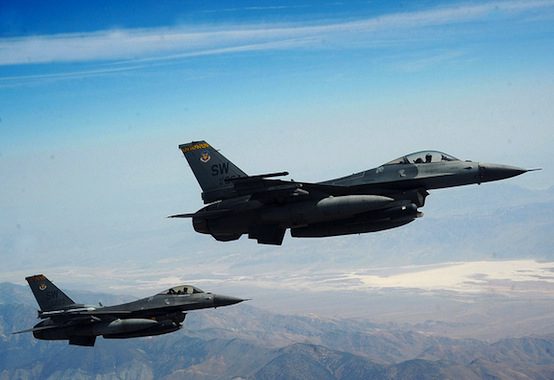A Quarter-Century of Interventions

Philip Bump calculated how many years the U.S. has been at war over the last seventy years. It’s an interesting study, but it actually understates how often the U.S. has used force overseas. Some of this has to do with Bump’s rather arbitrary definition of what it means for the U.S. to be at war:
Using somewhat subjective definitions of “at war” — Korea counts but Kosovo doesn’t in our analysis, for example — we endeavored to figure out how much of each person’s life has been spent with America at war.
According to Bump’s chart, the U.S. has been at war for 43.2% of my lifetime (I was born in 1979). That is a large percentage, but it is too low. It counts the years between 1991 and 2001 as a time when the U.S wasn’t at war. As anyone familiar with U.S. foreign policy during that decade knows, that isn’t really true.
If we include all U.S. military interventions, we find that the U.S. has bombed and/or invaded at least one other country at least once every year for the past twenty-one years straight. There has been an almost uninterrupted string of foreign interventions dating back to the invasion of Panama in 1989. The U.S. bombed Iraq on a regular basis between 1991 and 2003 in the name of patrolling the “no-fly” zones. There were also sporadic missile strikes during the Clinton years in Iraq and the strikes in Sudan and Afghanistan in 1998. The U.S. embarked on an ill-fated “nation-building” exercise in Somalia that ultimately claimed eighteen American lives, invaded Haiti to reimpose a deposed president, and bombed Serbs in the Bosnian and Kosovo interventions. The Gulf War is counted as “time spent in war” in this analysis, and for some reason Kosovo is not despite the fact that the U.S. was engaged in hostilities against Yugoslavia for a longer period in 1999 than it was in Iraq in 1991.
Some of these interventions may not fully qualify as wars (though Kosovo should by any reasonable definition), but they were all instances where the U.S. used force or the threat of force to try to dictate political outcomes in other countries. I happen to think almost all these interventions were wrong and not in the American interest, but it doesn’t matter whether one approves or disapproves of them. It is important to remember that they took place and that the U.S. was not at peace for the entire decade between the Gulf War and 9/11. By my reckoning, the U.S. has taken some kind of military action at least once a year for approximately two-thirds of my lifetime. The last fourteen years have been the period that included the most costly and intense U.S. interventions abroad, but the dozen years before that were also marked by the frequent use of force. The U.S. has been using force for various reasons on a regular basis over the last twenty-six years, and it has done so frequently in many places around the world. The generations that came of age after the end of the Cold War have spent the vast majority of their lives watching their government bombing or invading various parts of the globe. We have to some extent come to expect the near-constant interventionism, but we have also grown increasingly sick of it because we have been seeing it for so much of our lives.
Comments